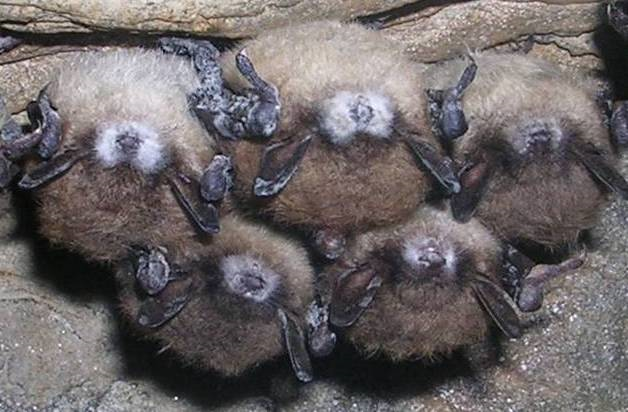Bat disease expands in Midwest; Rapid action needed in fifth winter of mass bat deaths
RICHMOND, Vt.— A fast-spreading fungus responsible for the deaths of more than a million bats in the United States has now reached a second Midwestern state. Wildlife officials in Indiana confirm that two bats found in the southern part of the state have the fungus that causes white-nose syndrome, a deadly disease that has decimated local bat populations in the East and threatens to push some bat species to extinction. The latest find is particularly disturbing because Indiana is the stronghold of the federally endangered Indiana bat, a species that was showing signs of recovery in parts of its range until the advent of the syndrome in 2006. “Sadly, it’s no surprise that this deadly and highly mobile disease is continuing to march into new territory. There are simply no excuses left for the government to delay action to address it,” said Mollie Matteson, a conservation advocate at the Center for Biological Diversity. “Emergency closures to keep people out of caves need to be made now, and the federal government needs to give scientists adequate funds to figure out how to stop the spread of white-nose syndrome.” Just last week the Center released a report [pdf] on the failure of federal land-management agencies to institute widespread emergency closures of caves and abandoned mines on federal lands in the western United States. Late last year, the Center called for at least $10 million in federal funds for white-nose syndrome research. A national plan to coordinate response to the disease is still in draft form more than a year after it was initiated. From its epicenter in upstate New York, the lethal fungus of white-nose syndrome has now spread to 15 states, including Missouri, and Ontario and Quebec. Bats from six different species have died, and three other bat species have been discovered with the fungus. Mortality rates in some Northeast bat colonies have reached 100 percent. Last spring, the white-nose pathogen was found on a bat in western Oklahoma, fueling biologists’ concerns that the disease would soon span the continent. “If we continue to delay real action to address this unprecedented wildlife crisis, it’s almost certain that this disease will continue to spread around the country and ravage bat populations,” Matteson said. While scientists believe bats are transmitting the white-nose fungus among themselves, research has demonstrated that the white-nose fungal pathogen can live in cave soils and be transported on clothing and gear into new sites by people. Strong evidence points to the probability that the fungus was originally transported this way to North America from Europe, where the fungus exists but does not kill bats. Widespread cave closures have been enacted on most eastern federal lands, but the fungus could be carried into new parts of the country by people before closures are enacted. “Bats provide essential services to people and ecosystems by keeping insect populations in check,” said Matteson. “Delaying action on white-nose is reckless and short-sighted. We are in danger of not only losing these amazing animals, but also losing the vital benefits they provide to agriculture, forestry and human health by keeping pest insects at bay.”
Bat Disease Expands in Midwest; Rapid Action Needed in Fifth Winter of Bat Deaths
Technorati Tags: mammal decline,extinction,global warming,climate change,ecosystem disruption,North America
